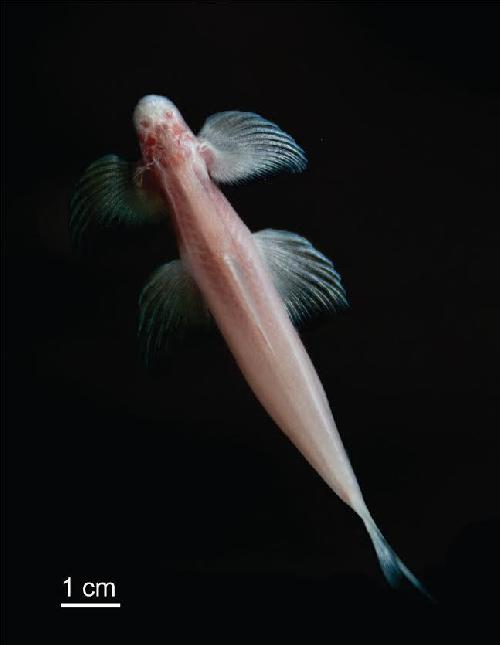Researchers have identified unique anatomical features in a species of blind, walking cavefish in Thailand that enable the fish to walk and climb waterfalls in a manner comparable to tetrapods, or four-footed mammals and amphibians.
The discovery of this capability, not seen in any other living fishes, also has implications for understanding how the anatomy that all species need to walk on land evolved after the transition from finned to limbed appendages in the Devonian period, which began some 420 million years ago.
This research is reported in Scientific Reports ("Tetrapod-like pelvic girdle in a walking cavefish," by Brooke E. Flammang, Daphne Soares, Julie Markiewicz and Apinun Suvarnaraksha - http://www.nature.com/articles/srep23711.)
Speaking of the unique anatomical structures seen in the cavefish, Cryptotora thamicola, Flammang says, "It possesses morphological features that have previously only been attributed to tetrapods. The pelvis and vertebral column of this fish allow it to support its body weight against gravity and provide large sites for muscle attachment for walking." With respect to evolutionary significance, she adds, "This research gives us insight into the plasticity of the fish body plan and the convergent morphological features that were seen in the evolution of tetrapods."



